 Happy birthday to MySociety: five years old, and now talking in terms of 20-year plans. Tom Steinberg’s speech at last night’s birthday party contains much to ponder.
Happy birthday to MySociety: five years old, and now talking in terms of 20-year plans. Tom Steinberg’s speech at last night’s birthday party contains much to ponder.
Our agreement on the basics is a given. You can do a tremendous amount of good with relatively little money, as long as you have good people involved. People who understand the context, who have a feel for the technology, and who have a passion for what they’re doing. That’s been the very basis of MySociety’s success, and (I hope) my own here at Puffbox.
‘So long as the cult of outsourcing everything computer related continues to dominate in Whitehall,’ Tom says, ‘little is going to change. [The UK government] fired everyone who could do those things, or employed them only via horribly expensive consultancies. It is time to start bringing them back into the corridors of power.’ Hmm… depends what you mean by ‘outsourcing’, and ‘bringing them back in’.
It’s an outrageous generalisation, but what the heck – my experience over the last five or so years has been that small computer-related projects done by small companies are generally successful, whereas large projects done by large companies aren’t. So if we’re talking outsourcing to those ‘horribly expensive consultancies’, by which I guess we’re talking six, seven or even (gasp) eight-figure budgets, hear hear.
But having operated as a consultancy myself for a little while now, I actually think the outsourcing of small jobs to small external operators is beneficial to all parties.
- The client generally deals with someone at, or certainly much closer to the coalface. No account managers, business analysts, project support officers, etc etc. All these people and processes are introduced to reduce risk; but in my experience, they actually increase the risk of not delivering.
- There’s an inherent benefit in doing lots of small jobs for lots of different people: you inevitably learn something new on every job, which then makes the next job even better. If you’re tied to one single government department, there just won’t be that many interesting jobs in any given year.
- ‘Coming in from outside’ gives you the right to be a bit more contrary, provocative, arrogant even. You can say the unsayable, if you like. And whilst it’s never a desirable state of affairs, you do have the right to say ‘no’ to the more insane propositions which might come your way.
- The rigidity of government grading and payscales is actually a disincentive for ‘doers’ to remain in a civil service job. To earn a ‘market wage’, you need to seek promotion to senior management levels… and with every upward step, you move further and further away from the coalface. More talking, less doing. Trust me, I’ve been there.
- It’s invariably cheaper, and often better quality.
Given the more commercial edge to the new MySociety website, it looks like I’m pushing at an open door there.
I’m a little intrigued by Tom’s comment about the ‘repurposing [of] generic new communications tools like blogs’. That has become the core of what Puffbox does, and I make absolutely no apology for it. It allows me to deliver powerful, intricate websites in double-quick time – giving end-users what they want, how they want it, whilst maintaining a straightforward back-end interface. It gives people cutting-edge tools to do their work, and hopefully makes them ask more difficult questions of the inevitably bespoke IT projects elsewhere in their work.
I detect a slightly pessimistic tone to Tom’s remarks, and not just on funding. ‘We’ve shifted the culture of government internet usage less than we might have hoped over the last five years,’ he concludes frankly. I’m more inclined to see the upside; it has shifted, and it is shifting – slowly.
I’ve written and spoken before about the power of precedent: and with every MySociety production, large or small, the precedents become stronger. (I hope the same can be said of Puffbox’s work too.) Yes, it’s taking time to see the ripple effect: but it’s definitely coming. Some of the projects I’m discussing with people just now are truly mouthwatering.


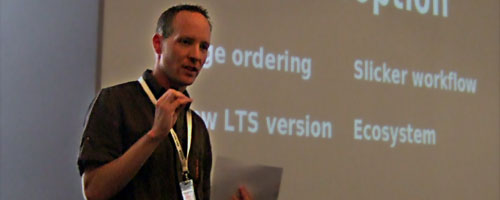
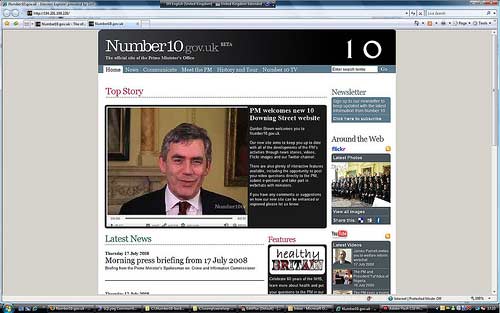
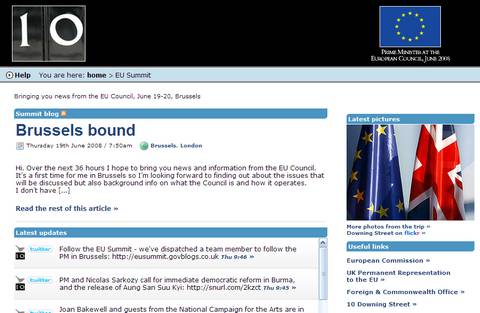
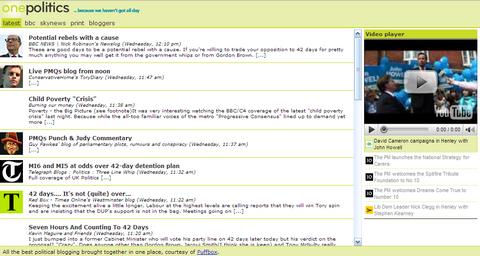
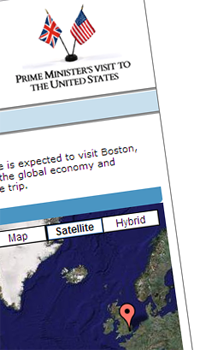 I hinted that there might be more online initiatives coming out of
I hinted that there might be more online initiatives coming out of